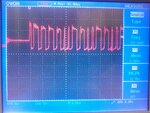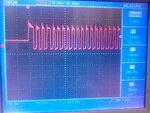tlogic
Member level 1

Hello i want to to convert a 12VDC to 1.2VDC (600mA to 700mA). I tried using the LM317 but it overheats very fast so i thought it would be better if i use a switching step-down converter. So i used the MC34063A with the components shown in the attached schematic. About a minute after putting a load of ~100mA the MC34063A starts getting hot and the input current starts increasing as the temperature increases. The component values have been calculated on paper and by this tool **broken link removed** . Also the output voltage is correct (1.2Volt) the only thing i have problem with is that the MC34063 is getting hot and hot by the use.









